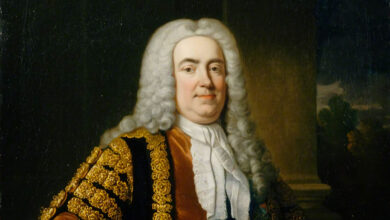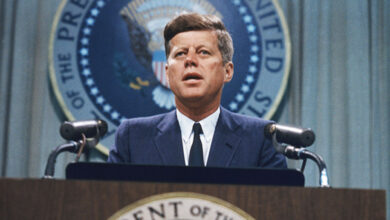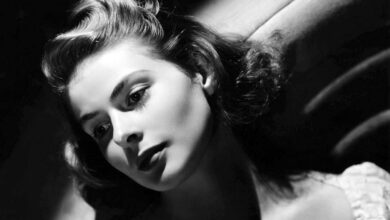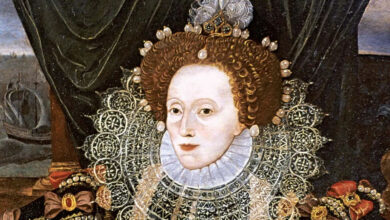Podcast: Play in new window | Download
Subscribe: Spotify | Amazon Music | Youtube Music | RSS
Andreas Nikolaus Lauda, known to the world as Niki Lauda was born in Vienna on 22 Feb 1949 into a prosperous paper manufacturing family. However, the family was not supportive of his interest in racing, and this ultimately led to a family feud and Niki cutting off all contact.
He began his racing career in minis in 1968 with a move soon afterwards into Formula Vee, followed by a stint in formula three but his career stalled somewhat in 1971, leading to him taking out a £30,000 loan which was secured against a life insurance policy to buy his seat in the new March Engineering Formula Two team. During his first season, even though he was officially an F2 driver, he drove his first F1 race for March. In 1972 he drove in 12 F1 races.
After taking out another bank loan, Lauda raced in the 1973 F1 season driving a BRM, but although the BRM was quick it was unreliable. Nevertheless, his performance in the 1973 Monaco Grand Prix brought him to the attention of Enzo Ferrari who asked Lauda’s former teammate Clay Ragazzoni about him. His glowing recommendation resulted in Lauda moving to the Ferrari team in 1974. He finished second in his debut race and only three races later, he won the Spanish Grand Prix, his first F1 win and the first one for Ferrari since 1972. He also won the Dutch Grand Prix that year and finished the championship season in a respectable fourth place. In 1975 he got off to a slow start but after finishing no better than fifth in the first four races he won the next four. With a third place at the Italian Grand Prix in Monza, he won his first F1 World Championship title. What’s more, Ragazzoni won that race and Ferrari claimed its first constructor’s title in 11 years.
Sometime during 1975, Niki met Marlene Knaus and the pair were married in 1976. They had two sons together, Mathias and Lukas but the couple was divorced in 1991.
The 1976 F1 season started the same way as the 1975 season ended, with Lauda winning races. After 5 wins from 9 races, he had accumulated twice as many points as his nearest rivals, Jody Scheckter and Britain’s James Hunt. However, two weeks before the 10th race in Germany at the 23-mile long Nürburgring, Lauda tried to get the other drivers to support him in boycotting the race as he thought it was too dangerous. However, he was unsuccessful, and the race went ahead on 1 August. On the second lap, Lauda lost control of his car and hit an embankment. It immediately caught fire and Lauda was initially trapped in the wreckage but was pulled clear by the Italian driver Arturo Merzario. He suffered significant burns resulting in him losing his eyelids and a significant portion of one of his ears. He sustained significant burn damage to his scalp and had also inhaled poisonous gases. Although he was initially able to stand after being pulled from the car, he soon collapsed into a coma and at the hospital, he was given the last rites by a priest. However, he made a miraculous recovery, returning to racing after missing only two events.
Lauda’s absence had resulted in Britain’s James Hunt catching him up in the race for the title and so the chase was now on for the 1976 championship. At the start of the final race in Japan Lauda was only three points ahead of Hunt. However, heavy rain resulting in Lauda retiring from the race on safety grounds. James Hunt finished third and won the 1976 title by one point.
In 1977, Niki Lauda won his second world title following three race victories and six second places. However, he refused to race in the last two races of the season due to the poor treatment he had received from the Ferrari team since the 1975 Japanese Grand Prix. Instead of removing pressure from him given his physical and mental condition, he felt that the team put even more pressure on him, including through fielding a third car driven by the then-unknown Gilles Villeneuve at the Canadian Grand Prix.
He left Ferrari and joined Brabham in 1978 but won only two races over the next two years due to the inferiority of the car and so he retired from racing in 1979 to concentrate on running his airline, Lauda Air which he had started the year before.
However, a previously unheard-of salary inducement of $3m from McLaren lured Lauda back for the 1982 season. In his first season with McLaren, he finished 5th in the championship but could only manage 10th in 1983. However, in 1984 he won five races which helped him win his third World Championship by the narrowest of margins, half a point. In 1985 he finished 10th and decided to retire, this time for good.
Niki Lauda didn’t lose touch with F1 though as he served several racing teams in various executive roles and occasionally appeared as an F1 analyst on television and in 1993 he was inducted into the motor racing hall of fame.
In 1997 he underwent a successful kidney transplant using an organ donated by his brother, but the kidney ultimately failed, leading to a second successful transplant in 2005. This time, the kidney was donated to him by one of the Lauda Air’s flight attendants, Birgit Wetzinger who he went on to marry in 2008 with her giving birth to twins in September the following year.
As well as his continued involvement with F1 and his television work, Lauda also started another airline called NIKI but both this and Lauda Air were merged with their major partner Air Berlin in 2011 although he acquired the NIKI brand back after Air Berlin collapsed in 2017. As a commercial pilot with an up-to-date license he also sometimes flew as a captain for his airline. At the age of 70, on 20 May 2019, Niki Lauda died peacefully in his sleep at the University Hospital of Zurich where he had been undergoing treatment related to kidney problems. His funeral took place at St. Stephen’s Cathedral in Vienna and was attended by many F1 greats including Jackie Stewart, Alain Prost and Lewis Hamilton.
Podcast: Play in new window | Download
Subscribe: Spotify | Amazon Music | Youtube Music | RSS




